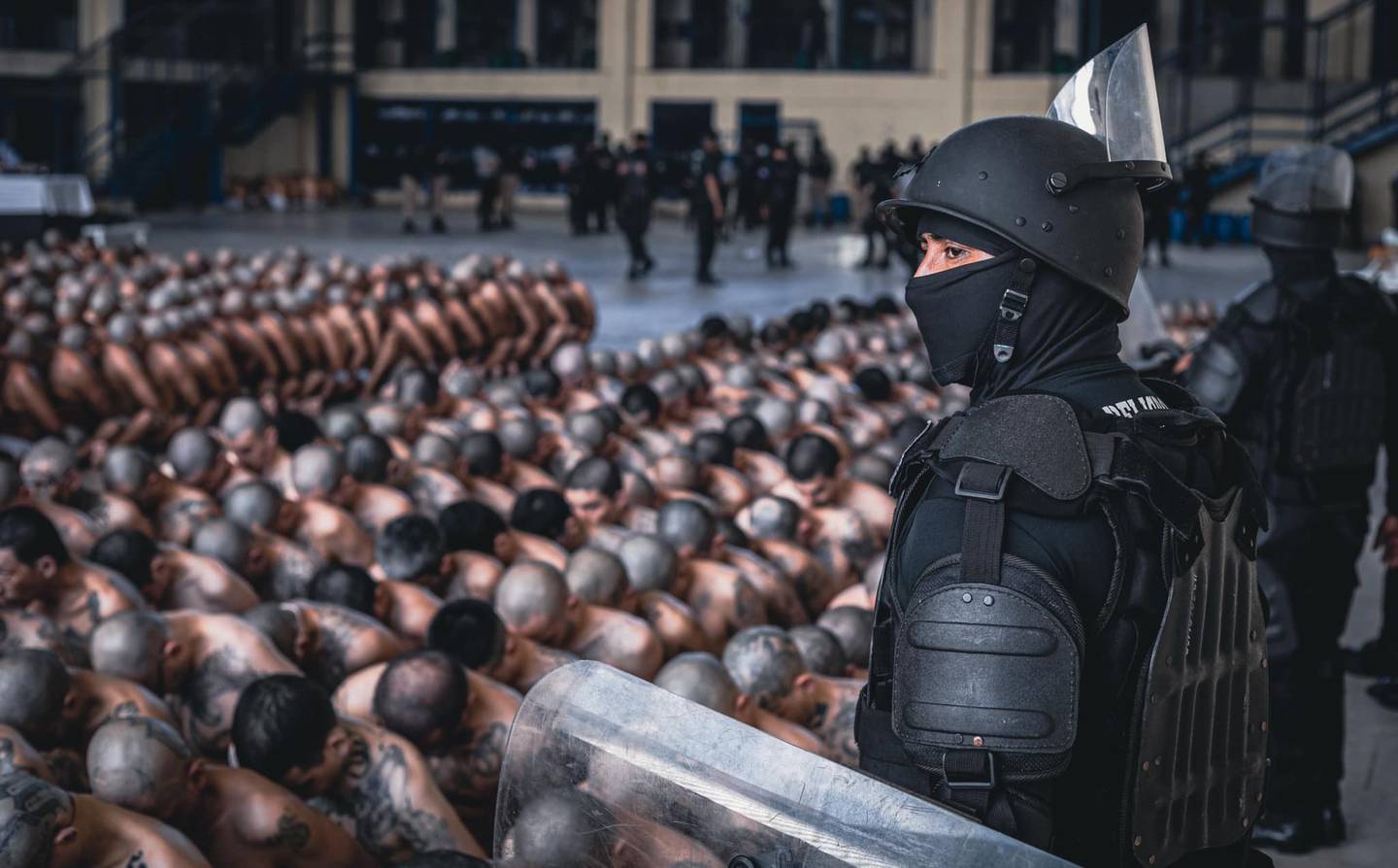The 1980s were marked by the civil wars in El Salvador, Guatemala and Nicaragua, and the economic instability in Honduras that motivated a significant number of Central Americans to emigrate to the United States. Many people ended up in poor districts of Los Angeles, California.
Adolescents from migrant families suffered social exclusion and even ethnic violence. To confront the hostile environment on the streets, the diaspora first joined Chicano gangs and later formed their own groups, the best known being the Mara Salvatrucha (MS-13) and the Mara Barrio-18 (18th Street Gang), in reference to the street where it was born.
In the mid-1990s, when the United States began to perceive this migrant group as potential threats to national security, it enacted the Illegal Immigration Reform and Immigrant Responsibility Act, which expanded the categories under which they could be deported. The issuance of the legislation led to an increase in deportations of ex-convicts and various gang members to the Northern Triangle.

An analysis by the Spanish Institute for Strategic Studies (IEEE) reports that the returnees reproduced in El Salvador, Guatemala and Honduras the way of acting that they had learned on the streets and in the detention centers of Los Angeles. Quickly, other young people who were already associated with street gangs joined and there was a hybridization of the gangs with the traits provided by the Californian-style gangs.
THEIR WAY OF OPERATING
Maras have established themselves in northern Central America as an alternative power to the state that demands extortion known as a ‘war tax’. From there, they carry out drug trafficking or drug dealing and extortion activity against small businesses and residents of the areas in which they have influence.
Extortion is also applied to the transport sector, street vendors, those who receive remittances from relatives abroad or income from a job. If the victim does not agree to the extortion or is late in the payment, then comes the kidnapping of a family member as a form of pressure, or death.
Accidentally crossing into gang territory or refusing to cooperate can spell death. The gang members impose their rules in neighborhoods and neighborhoods, and this has led hundreds of thousands of people to flee inside and outside the countries.
Meanwhile, over the years, the leaders of the gangs that arrived in northern Central America at the beginning of the millennium have now made a capital.
ACTIONS TO COMBAT THEM
In the 2000s, governments in northern Central America, in an attempt to confront gangs and associated crime, began enacting “iron hand” policies that led to the mass incarceration of suspected gang members.
According to World Prison Brief (WPB) records, in Guatemala the prison population went from 6,974 inmates to 25,538 in 2020; in El Salvador, during that same period it went from 7,754 to 37,190 and in Honduras, from 11,500 to 20,506 in 2018.
However, crime persists and has led the three countries to be among the most violent in the world for many years. In a regional effort, the governments of the Northern Triangle launched a Tri-National Anti-Gang Force in 2016, tasked with combating these criminal groups and drug trafficking, but it did not prosper.
Since then, this criminal structure has expanded. According to records, there is a presence in the United States, Mexico, Canada and even Spain. Meanwhile, Nicaragua has stopped it with the application of the Retaining Wall strategy, so that, despite the fact that crime continues to be high in that country, it is lower than in its neighboring countries.
During his presidential administration, Donald Trump referred to the gangs as “animals and we have to be very, very tough.” He also called them “a ruthless gang that has violated our borders and turned once-peaceful neighborhoods into bloody killing fields. Horrible people, by the way.”
The White House also issued a statement entitled What you need to know about the violent animals of MS-13, in which it described some crimes committed by this group in different cities.
BUKELE AND CASTRO DECLARE WAR ON THEM
In El Salvador, in response to an escalation of 87 murders committed between March 25 and 27, Congress accepted a request by President Nayib Bukele to decree an emergency regime, which was extended for the eighth time in mid-November.
Since then, in the “war against gangs” the government has captured 59,307 people linked to the gangs and seized 2,417 vehicles, 14,086 cell phones, 1,971 firearms, US$1.4 million in cash, and 6.2 tons of drugs.
Also in Honduras, President Xiomara Castro declared a national emergency in matters of security and a war on extortion at the end of November, through a plan to curb the extortive activity of maras and gangs, which includes a partial state of exception in some neighborhoods and neighborhoods of the Central District, formed by Tegucigalpa and Comayagüela, and San Pedro Sula and Choloma, where the presence of these criminal structures has been identified.
“The National Police has my full support to combat crime, extortion, drug trafficking and dismantle criminal organizations, until we identify and capture the white-collar leaders, we are going to eradicate extortion to the last corner of our country” Castro said at the launch of the Comprehensive Plan for the treatment of extortion and related crimes.
With information from Bloomberg Línea

